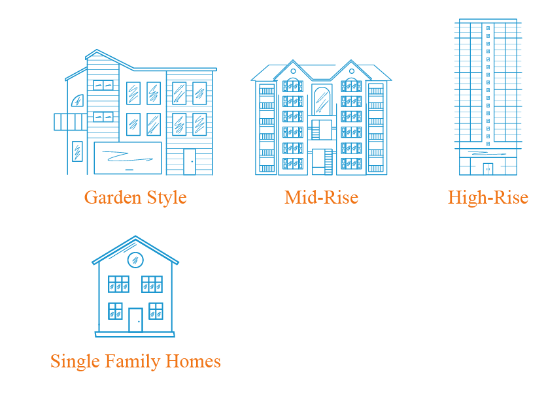
As a homeowner, the integrity of your plumbing system is crucial for maintaining a comfortable and functional living environment. Over time, pipes can wear down, leading to leaks, reduced water pressure, and potential health hazards. When these issues arise, Residential repiping may be the best solution. This article will guide you through the essentials of residential repiping, including its benefits, signs that indicate the need for repiping, the best materials to use, and what to expect from the process.
What is Residential Repiping?
Residential repiping refers to the process of replacing old or damaged pipes in your home with new, more durable materials. This can involve replacing all the pipes in your home or targeting specific areas that are showing signs of wear and tear. The goal of repiping is to improve water quality, enhance water pressure, and prevent leaks that could lead to costly water damage.
Signs You Need Residential Repiping
Identifying the signs that indicate the need for repiping is essential for maintaining a healthy plumbing system. Here are some common indicators that your home may require repiping:
Do you want to visit Haridwar? travel agents in Haridwar is the right place to plan your tour. You can book your tour from here.
- Frequent Leaks: If you find yourself frequently repairing leaks in your plumbing system, this is a strong sign that your pipes may be failing.
- Low Water Pressure: A sudden drop in water pressure can indicate that your pipes are clogged, corroded, or damaged, making repiping a potential solution.
- Discolored or Unpleasant-Tasting Water: If your water has a brown or rusty color or a strange odor, it may indicate that your pipes are corroding, which can lead to health risks.
- Old Plumbing Materials: If your home was built with outdated plumbing materials, such as galvanized steel or polybutylene, you may need to consider repiping. These materials are known to degrade over time, leading to leaks and other issues.
- Unusual Noises: Banging or gurgling sounds in your pipes can indicate air pockets or other issues that may require repiping.
- Water Damage: If you notice signs of water damage, such as stains on walls or ceilings, this may indicate leaking pipes that need to be replaced.
Benefits of Residential Repiping
Investing in residential repiping offers numerous benefits for homeowners:
- Improved Water Quality: New pipes eliminate contaminants and improve the quality of your water, ensuring that it is safe for drinking and cooking.
- Enhanced Water Pressure: Repiping can restore optimal water pressure throughout your home, making daily tasks like showering and washing dishes more efficient.
- Reduced Risk of Future Leaks: New piping materials are less prone to corrosion and leaks, minimizing the chances of water damage in the future.
- Energy Efficiency: Modern piping materials are designed to be more energy-efficient, reducing heat loss and improving the overall efficiency of your plumbing system.
- Increased Property Value: A home with updated plumbing is more attractive to potential buyers, and repiping can increase your property’s market value.
- Peace of Mind: Knowing that your plumbing system is reliable and up-to-date provides peace of mind, allowing you to focus on enjoying your home rather than worrying about plumbing issues.
Choosing the Right Materials for Residential Repiping
When considering repiping, selecting the right materials is crucial. Here are some of the most common materials used for residential repiping:
- PEX (Cross-Linked Polyethylene): PEX is a flexible, lightweight material that is resistant to scale and chlorine. It is easy to install, less expensive than traditional piping options, and can be easily maneuvered around obstacles.
- Copper: Copper piping is a durable and long-lasting option known for its resistance to bacteria and corrosion. While more expensive than PEX, copper pipes are a proven choice for their reliability and longevity.
- CPVC (Chlorinated Polyvinyl Chloride): CPVC is a cost-effective and lightweight alternative that offers good resistance to corrosion and chemicals. It is also easy to install, making it a popular choice for many homeowners.
- Galvanized Steel: While not commonly recommended for new installations due to corrosion issues, galvanized steel may still be found in older homes. If your home has these pipes, repiping with more modern materials is advisable.
The Residential Repiping Process
Understanding the repiping process can help you prepare for the project. Here’s what to expect when repiping your home:
Do you want to visit char dham? char dham tour operator is the right place to plan you Char Dham tour. You can book you tour from here.
- Initial Inspection: A licensed plumber will conduct a thorough inspection of your plumbing system to identify issues and determine the extent of the repiping needed.
- Consultation and Planning: After the inspection, the plumber will discuss your options, recommend materials, and provide a detailed estimate outlining the scope of work, costs, and timeline.
- Preparation: Before repiping begins, the plumber will shut off your water supply and prepare the work areas, which may include moving furniture and protecting floors and walls.
- Repiping: The actual process involves removing old pipes and installing new ones. Depending on your home’s size and the complexity of the plumbing system, this can take a few days to complete.
- Testing and Inspection: Once the new pipes are installed, the plumber will thoroughly test the system to ensure there are no leaks and that everything is functioning correctly.
- Final Cleanup: A reputable plumbing service will ensure that your home is left clean and tidy, removing debris and materials associated with the repiping project.
Choosing the Right Plumbing Service
Selecting the right plumbing service is crucial for a successful repiping project. Here are some tips to help you make an informed decision:
- Check Qualifications: Ensure that the plumbing service is licensed, insured, and has a solid reputation in your community. This protects you in case of any accidents or issues during the project.
- Read Customer Reviews: Look for testimonials and reviews online. These can provide insights into the quality of service and customer satisfaction from previous clients.
- Get Multiple Estimates: Contact several plumbing companies to obtain estimates. This allows you to compare prices, services, and expertise before making a decision.
- Inquire About Experience: Ask about the plumbing service’s experience with repiping projects, especially those involving the materials you are considering.
- Ask About Warranties: A reputable plumbing service should offer warranties on both materials and workmanship. This gives you peace of mind knowing you’re protected after the job is completed.
Residential repiping is an essential investment that can significantly improve your home’s plumbing system. If you’re experiencing issues such as frequent leaks, low water pressure, or discolored water, it may be time to consider repiping. By working with a qualified plumbing professional, you can ensure that your new plumbing system meets your needs and provides reliable performance for years to come.

